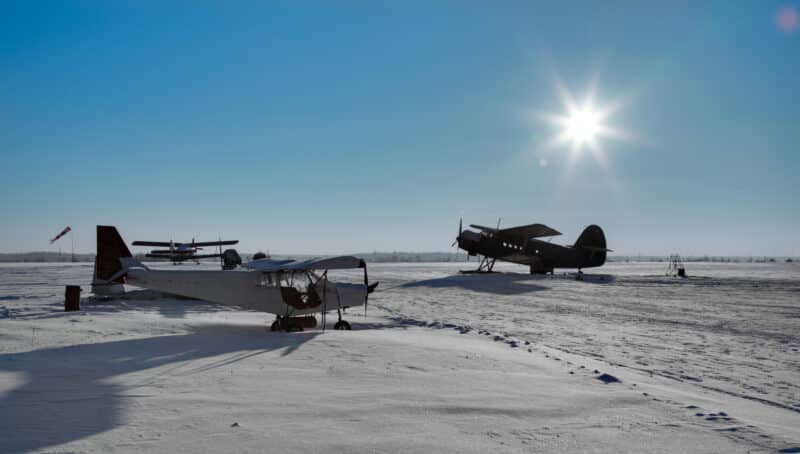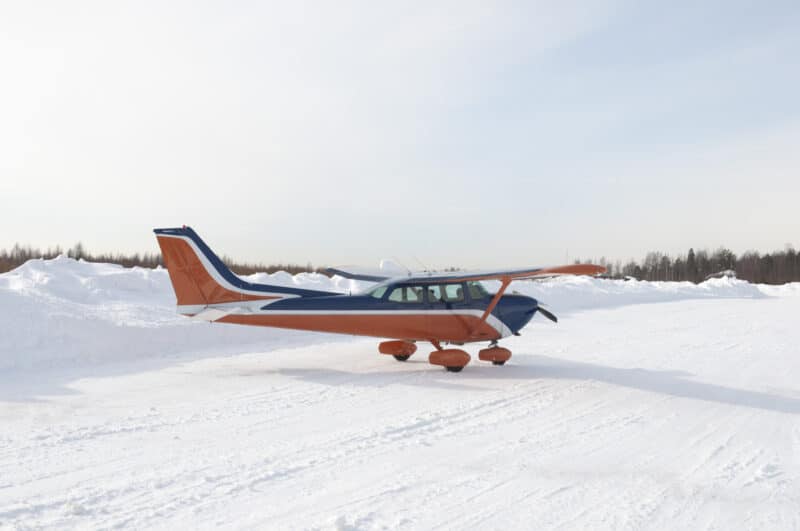Ice or snow can indeed disrupt travel plans significantly. The concern about reaching the airport during inclement weather is valid, but the capability of the aircraft to depart or arrive in snowy conditions is also a critical factor.
Relax, you're in safe hands because airlines have special procedures in operation anytime there is snow or a snow forecast.
While planes are theoretically capable of taking off and landing on snow-covered runways, commercial aviation operations under such conditions are not routine. FAA regulations impose specific restrictions on flights during snowy weather to ensure safety. To mitigate risks, runways are often plowed and aircraft are de-iced before takeoff, enhancing safety margins for flying in snowy conditions. Many commercial aircraft are designed with features that enable them to operate effectively in snow.
For those looking into aircraft investment, understanding the weather-related limitations of different aircraft models is crucial. For operations requiring landing capabilities on snow, selecting an aircraft equipped with ski landing gear becomes essential. This feature allows for safer landings on snow-covered surfaces, expanding the operational versatility of the aircraft in winter conditions.
Table of Contents
Can Planes Land in Snow? Why This is a Rare Occurrence
The Federal Aviation Administration (FAA) has guidance that advises against landing on runways covered in ice and snow. However, the FAA makes an exception if there are no other places where the plane can land.
Planes equipped with skis are a different matter because they are designed for landing in such conditions. However, these airplane types aren’t designed for landing at commercial airports, so you won’t see one in these settings.
What Difference Does Snowfall Make? Is it Safe To Fly In Snow?
For small planes to land even under a light snowfall, they must have de-icing equipment.
However, being able to land safely only tells part of the story of whether a plane can safely land in snow or not.
Many small planes fly at lower altitudes than their larger counterparts, with many not being able to reach heights above winter storms. Changing weather conditions and winds can affect these small planes more than the bigger airplanes.
Most small planes have weaker engines than commercial planes, which decreases the chances of successfully escaping poor conditions. With a lower altitude, pilots lack the option of flying above the storms, which is essential in some cases.
Unless a small plane has more advanced equipment, pilots will need to rely on more sight for safe landings. Snowy conditions most often come with poor overall visibility.
Weather is just one of the considerations that pilots with get-there-itis need to think about.

Is There a Threat of Damage to the Plane From Snow?
While we know that planes can land on water, but snow is different.
Although planes can take off and land in the snow under the right circumstances, there is a threat of damage to the aircraft, especially in heavy snow or ice. The most vulnerable areas are the engine and the wings, with each facing a different type of threat.
What Can Snow Do to the Engine?
Snowfall, in and of itself, is unlikely to damage a jet engine because of the quality of construction. Freezing rain and ice, however, can block air inlets into the engine.
When the engine’s air inlets get blocked, a flameout may occur, which causes the engine to shut down. But flameouts are rare because most engines have anti-ice valves that keep ice from forming. This means you are not likely to run into this problem.
This is why de-icing a plane is very important.
What Can Snow Do to the Wings?
When ice or snow form on a plane’s wings, there is less lift because of a lack of smooth airflow. Most aircraft in use today have features that keep the ice and snow from building up, so this becomes an issue only in rare circumstances.
In most cases, the ice or snow won’t impact a plane’s landing. A lack of equipment to keep the runways clear would be the most likely to cause problems and, in most cases, would be resolved by airport closure.
Does Pilot Skill Make a Difference?
A skilled pilot can handle snowy and icy conditions with minimal worry. After all, many locations will have wintery weather conditions for at least part of the year.
The pilots are usually qualified to fly using instruments in situations with poor visibility.
One thing to consider for aircraft owners is that airports have an interest in staying open as much as possible, even in wintery conditions. Unless you are flying into a location with minimal air traffic, you can expect an airport to take appropriate precautions.
Most airports have plowing and de-icing equipment for the snow-covered runways, regardless of size. These precautions allow safe takeoffs and landings.

How Does Plowing a Runway Make Snowy Landings Safer?
Planes, unlike cars or trucks, are unlikely to skid on icy runways because of their increased weight. Snow and slush are also easier for aircraft to pass through than other vehicles.
Airport officials still work hard to keep snow and ice off runways. A reason this is the case is that these conditions make it harder for the plane’s brakes to work.
Snow is relatively easy to remove by shoveling or plowing. Remaining ice or slush requires different interventions, possibly in the form of chemicals like potassium acetate or ice, to break everything down.
When an airport’s runways are still not clear, pilots are sometimes asked to remain in a holding pattern until a clear runway is available. Sometimes, an alternate airport that can accommodate smaller planes might be necessary for a safe landing.
A few rare circumstances may require a pilot to land on an uncleared runway during wintery weather. For example, if a plane is low on fuel or there is an engine malfunction, the risk of landing in snow may be necessary.
Although these measures are an essential part of safety for takeoffs and landings, they are not the entire solution. Airport staff may also have to de-ice planes.
Planes have a design intended to keep them safely in the air, but this can end up disrupted by heavy ice accumulation. Turbulence is much more likely with heavy ice accumulation, and crashes can happen in a worst-case scenario.
Should We Worry About Snow Developing During Your Flight? No, Not Really.
Although we know planes can safely land during snowy conditions, what about situations where the snow starts before the aircraft approaches the airport?
This scenario is one where pilot training comes into play. A pilot with the right skill level will know when they need to seek a different landing site or return to the airport.
The pilot would have to take into account things like visibility, wind patterns, and any other possible dangers that could put the plane in danger. They would also need to consider their own skill level and how much experience they have in managing such a situation.
What if things get worse – can planes fly if there’s a winter storm warning? I’ve written about that separately, check it out!
If the pilot determines that they can safely land at another airport or alternate landing site, they should do so. If they are not confident in their ability to make a safe landing, they should return to the airport and contact air traffic control for advice or assistance.
The pilot must also be aware of any applicable regulations regarding diversion operations. If a diversion is necessary, the pilot will be required to file an amended flight plan with air traffic control and follow all rules associated with that operation.
Final Thoughts
Although planes can land in the snow, there are factors to keep in mind that may influence this decision. Keeping all of these snow management strategies in mind helps ensure a safer experience.
- Visibility: Pilots need to be able to see the runway and other aircraft in order to safely land. If visibility is low due to snow, then it could make the landing more difficult and dangerous.
- Runway Conditions: Snow can make the runway slippery and uneven, which can increase the risk of an accident during takeoff or landing. Therefore, it’s important to make sure that the runway is clear of snow and debris before attempting a landing.
- Aircraft Type: Different types of aircraft are designed to handle different conditions, so it’s important for pilots to know what type of plane they’re flying and how it will react in different weather conditions.
- Air Traffic Control (ATC): The controller must be informed that a plane is attempting a snow landing so they can ensure that no other planes are in the area and help guide the pilot if needed.
- Weather Conditions: While landing in snowy conditions is possible, strong winds or low temperatures can make it more difficult or even impossible for some aircraft to land safely.
So, pilots should always check the weather before taking off and, if needed, make plans based on what they find.